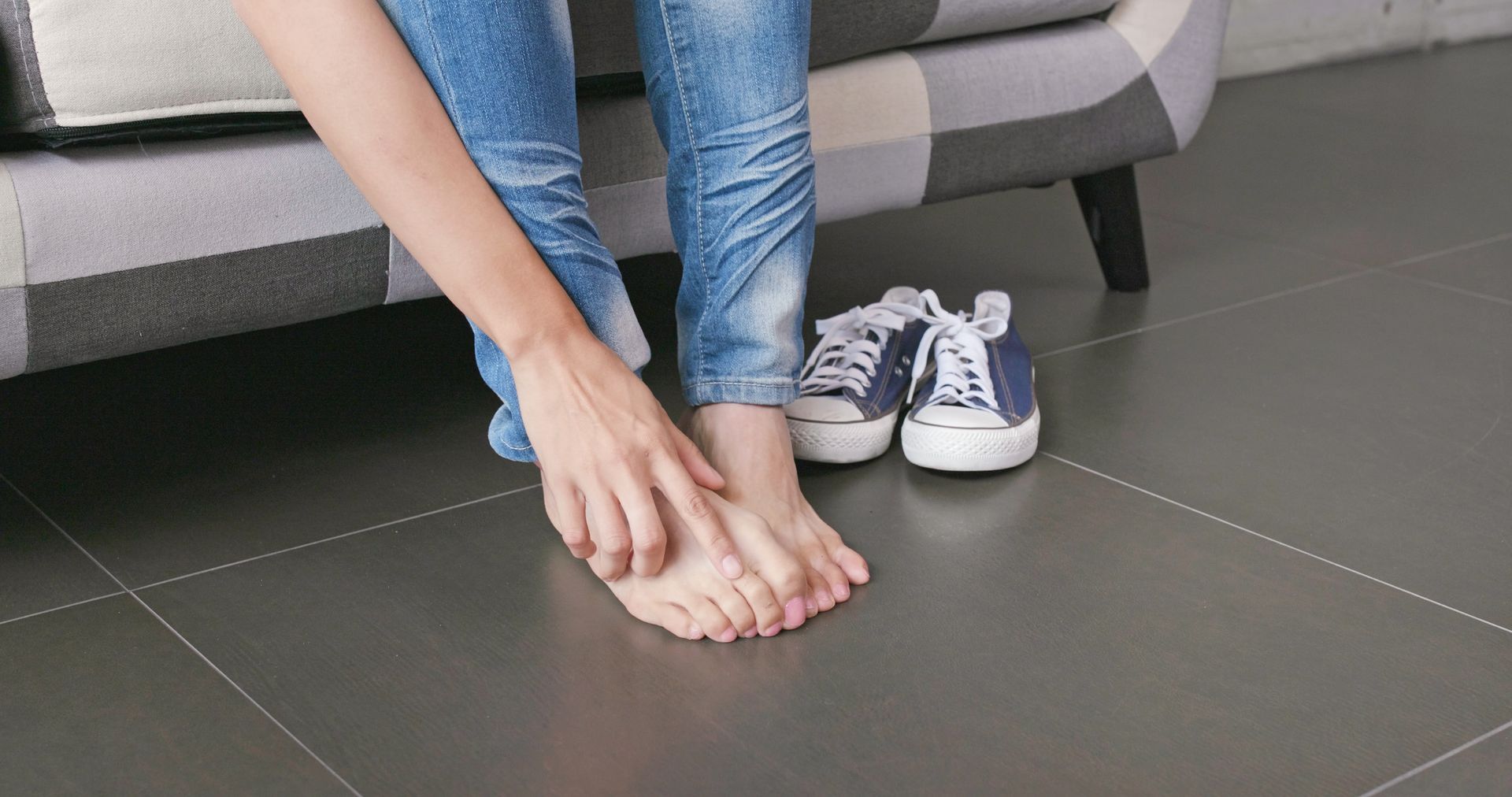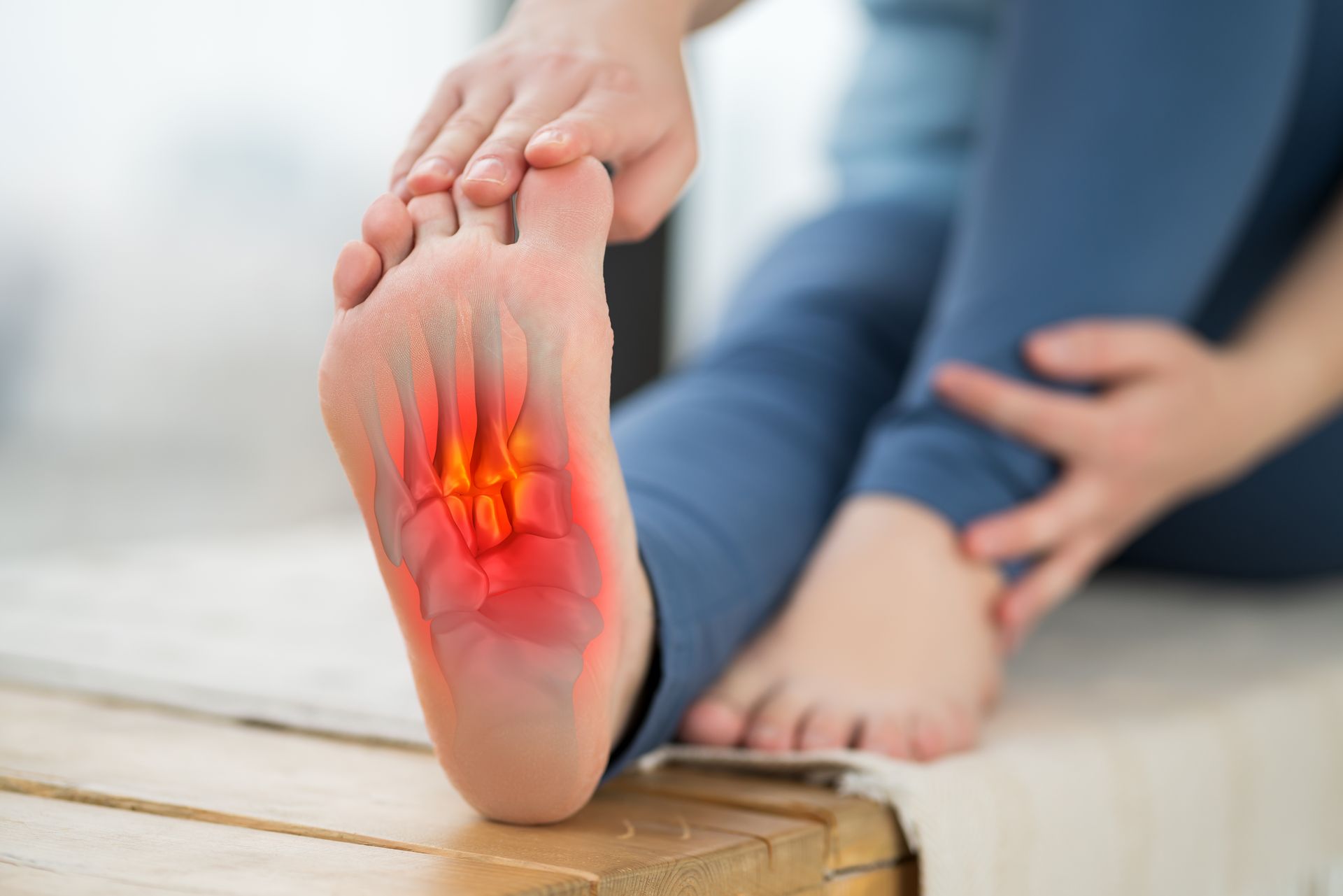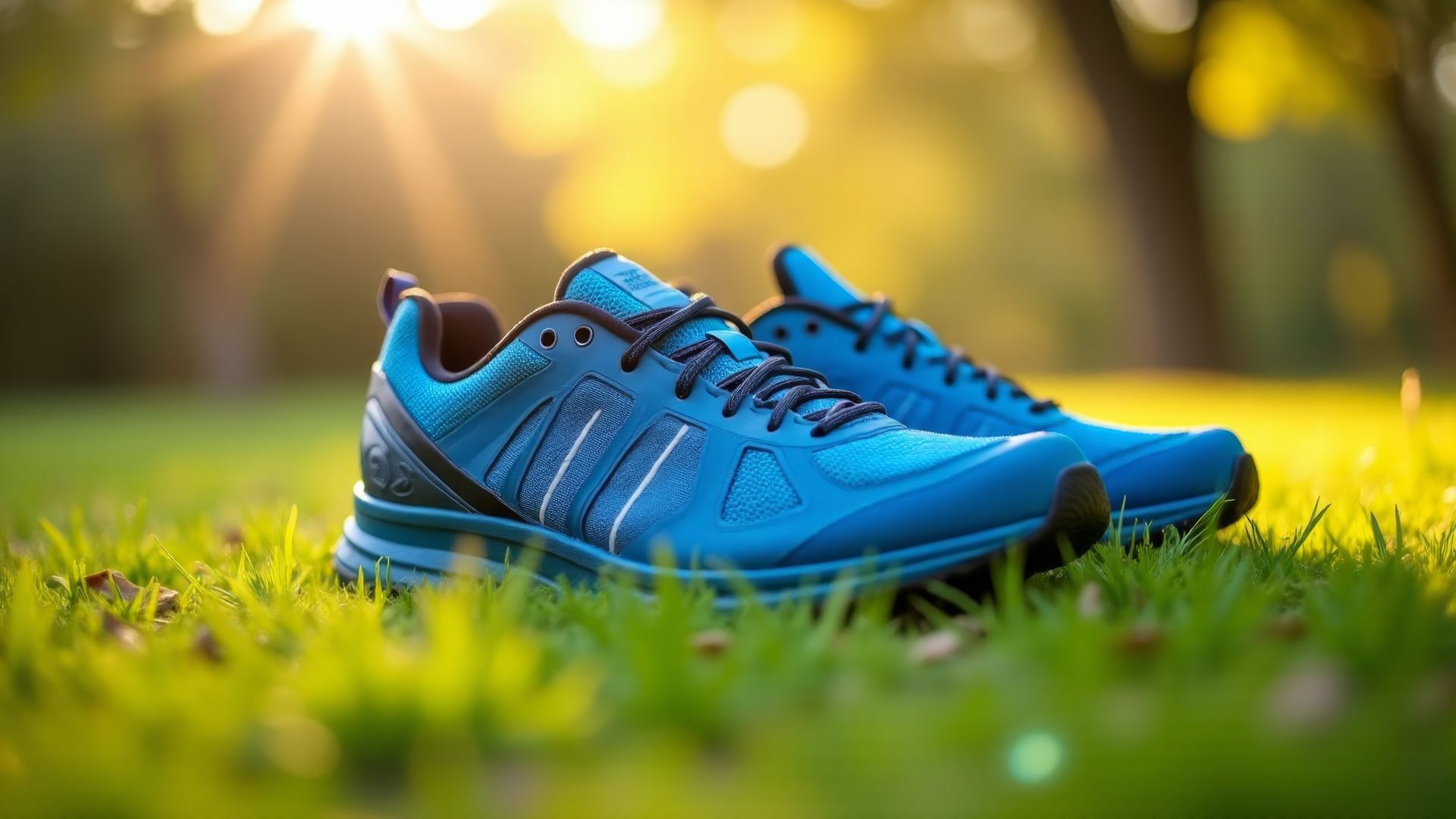What to Expect During Your First Podiatry Visit
Key Points
- Your first podiatry visit includes a comprehensive medical history review and physical examination
- Podiatrists are specialized doctors (DPM) who treat all foot, ankle, and lower leg conditions
- The appointment typically lasts 30-60 minutes and may include diagnostic testing
- Many conditions can be treated during your first visit, including ingrown toenails and minor foot problems
- Proper preparation helps ensure you get the most from your appointment
- Family Foot & Ankle in Ocala offers same-day appointments and comprehensive foot care
Stepping into a podiatrist's office for the first time can feel a bit intimidating—especially if you're not sure what to expect. Whether you're dealing with persistent heel pain, a stubborn ingrown toenail, or you're simply worried about a change you've noticed in your feet, that first appointment might have you feeling nervous.
Here's the good news: visiting a podiatrist is much more straightforward than you might think, and our team at Family Foot & Ankle in Ocala is committed to making your experience as comfortable and informative as possible. Let's walk through exactly what you can expect during your first podiatry visit, so you can arrive feeling confident and prepared.
What Does a Podiatrist Do?
Before we dive into your first visit, let's clarify exactly what a podiatrist is and what they do. A podiatrist is a healthcare provider who specializes in caring for your feet. They diagnose and treat issues that affect your feet, ankles and lower legs.
Educational Background: Podiatrists are doctors who specialize in treating the feet and ankles, but their training is a little different from other physicians. Instead of attending a traditional medical school, they go to schools specifically for podiatric medicine and earn the title "DPM," which stands for Doctor of Podiatric Medicine (rather than "MD"). Their education includes four years of medical school focused on the structure and function of the foot and ankle, followed by a three-year residency in a hospital or clinical setting where they get hands-on experience.
What Podiatrists Can Do:
- Diagnose health conditions that affect your feet and ankles
- Order lab tests or imaging tests like X-rays, MRIs, and ultrasounds
- Prescribe medicine
- Perform surgery on your foot and ankle
- Prescribe medical devices like orthotics (shoe inserts), braces and casts
- Provide preventive care and education
Conditions Podiatrists Treat
Understanding what podiatrists treat can help you determine if your concerns warrant a visit. Podiatrists treat people of any age for many foot-related conditions, including:
Common Foot Problems:
- Bunions and hammertoes
- Ingrown toenails
- Heel pain and plantar fasciitis
- Athlete's foot and fungal nail infections
- Corns and calluses
- Warts
Injuries and Trauma:
- Fractures and sprains
- Achilles tendon injuries
- Sports-related foot and ankle injuries
- Ankle sprains
Chronic Conditions:
- Diabetic foot care and complications
- Arthritis affecting the feet and ankles
- Circulatory problems
- Nerve damage (neuropathy)
Structural Issues:
- Flat feet or high arches
- Foot deformities
- Gait abnormalities
How to Prepare for Your First Visit
Proper preparation can help ensure you get the most out of your appointment and feel more comfortable during your visit.
What to Bring
Essential Documents:
- Insurance cards and identification
- List of current medications and supplements
- Any previous medical records related to your foot or ankle problems
- Recent X-rays, MRIs, or other imaging studies if you have them
Medical History Information: Before your appointment, take a few minutes to jot down your symptoms. It’s easy to forget the details once you’re in the exam room, and even small things can help your doctor get a clearer picture of what’s going on.
Consider these details:
- When did your symptoms start?
- What activities make them better or worse?
- Have you tried any treatments at home?
- Do you have a family history of foot problems?
- Any previous foot or ankle injuries or surgeries?
What to Wear
Footwear Considerations:
- Wear comfortable, supportive shoes that are easy to take off for the foot exam.
- If your symptoms involve walking or exercise, bring the shoes you usually wear for those activities.
- Choose loose-fitting pants that can be rolled up to your knees so the doctor can examine your lower legs.
Foot Preparation:
- Wash and dry your feet thoroughly before your appointment
- Remove nail polish so the doctor can evaluate your toenails properly
- Don't get a pedicure right before your visit—podiatrists prefer to see your feet in their natural state
- Avoid cutting your toenails too short; the doctor may need to examine them or take samples
What Happens During Your First Appointment
Your first visit to a podiatrist will be a lot like any other doctor. The appointment typically lasts between 30-60 minutes and follows a structured process designed to thoroughly assess your foot health.
Step 1: Check-In and Paperwork
When you arrive for your appointment, you’ll be asked to fill out a medical history form. This will include questions about your current foot issues, any medical conditions you have, medications you’re taking, and past surgeries. It’s a good idea to show up a few minutes early to take care of the paperwork and check-in steps, like confirming your personal and insurance details.
Step 2: Meeting with Your Podiatrist
At your first visit, the podiatrist will start by asking what’s been going on with your feet—what kind of pain or problems you’re having and how long they’ve been bothering you. They’ll also want to learn a bit about you and what led you to make the appointment. The goal is to understand your symptoms in context, so they can figure out the best way to help.
Step 3: Physical Examination
After talking through your symptoms, the podiatrist will do a physical exam. They’ll look at your feet, ankles, and lower legs, and may review your medical history to get the full picture. This part of the visit often includes checking how your joints move and how your body lines up when you walk or stand—things that can point to what’s causing the issue.
What the Exam Includes:
- A visual check of your feet, toenails, and lower legs
- Looking for signs of common issues like fungus, warts, corns, bunions, and more
- Checking your toenails for things like discoloration or brittleness
- Assessing blood flow in your feet and lower legs
- Testing how well your joints move and how flexible they are
- Watching how you stand and walk to spot any posture or gait problems
Your podiatrist will watch how you stand and walk, check the range of motion in your joints, and take a look at how your shoes fit. You might be asked to walk a short distance so the doctor can check for any issues with your gait or movement patterns.
Step 4: Diagnostic Testing (If Needed)
Your podiatrist may also use diagnostic tools to get a better look at what’s going on. This could include non-invasive tests like an ultrasound to check blood flow and overall foot health. If they think more information is needed, they might order imaging like a bone scan, MRI, or a more detailed ultrasound to look for structural problems or issues with your blood vessels.
Possible Tests Include:
- X-rays to check for fractures or bone abnormalities
- Ultrasound to assess soft tissue and blood flow
- MRI for detailed soft tissue imaging
- Blood tests to check for conditions like diabetes or arthritis
- Gait analysis using specialized equipment
Step 5: Diagnosis and Treatment Planning
Once your podiatrist has reviewed your symptoms, medical history, exam results, and any test findings, they’ll talk with you about what’s going on and what can be done to help. Depending on the issue, your treatment plan might include options like physical therapy, cortisone injections, custom orthotics, or—in some cases—surgery. They'll walk you through each option and help you decide what makes the most sense for your situation.
What Can Be Treated During Your First Visit
Many patients are surprised to learn that several conditions can often be addressed during their initial appointment. The first visit is often the time to treat bunions, ingrown toenails, heel and lower back pain, circulation in your feet if you have diabetes, and foot deformities.
Common First-Visit Treatments:
- Ingrown toenail removal
- Callus and corn trimming
- Wart treatment
- Wound care
- Cortisone injections for pain relief
- Custom orthotic evaluation and fitting
- Nail fungus treatment
- Basic diabetic foot care
The podiatrist might suggest orthotics, padding, or physical therapy to treat your problems. They can treat some conditions in the office. They might use tools like syringes to give you pain medication and nail splitters or a nail anvil to remove ingrown toenails.
Understanding Your Treatment Options
Your podiatrist will likely discuss options with the patient and help him or her make an informed decision. Treatment recommendations are always personalized based on your specific condition, lifestyle, and preferences.
Conservative Treatments:
- Custom orthotics and shoe inserts
- Physical therapy and exercises
- Medication (topical or oral)
- Lifestyle modifications
- Footwear recommendations
Advanced Treatments:
- Injections (cortisone, hyaluronic acid)
- Minor in-office procedures
- Surgical interventions when necessary
Preventive Care:
- Regular foot exams (especially important for diabetics)
- Proper foot care education
- Footwear guidance
- Activity modifications
Questions to Ask During Your Visit
Don't be afraid to ask questions during your appointment with a podiatrist. Your podiatrist is highly knowledgeable and is here to help you understand your condition and treatment options and to address any concerns you may have.
Important Questions to Consider:
- What is causing my foot problem?
- What are all my treatment options?
- How long will it take to see improvement?
- Are there any lifestyle changes I should make?
- When should I schedule a follow-up appointment?
- What warning signs should I watch for?
- How can I prevent this problem in the future?
Follow-Up Care
After your initial appointment, it's important to schedule follow-up appointments to ensure the best possible outcome for your foot health. Depending on your condition, your podiatrist may recommend appointments every few weeks or months. During follow-up appointments, your podiatrist will assess your progress and make any necessary adjustments to your treatment plan.
Special Considerations for Diabetics
If you have diabetes, your first podiatry visit is especially important. People with Type 1 and Type 2 diabetes are at a much higher risk for foot problems like poor circulation, nerve damage, ulcers and infection. If you are a diabetic, you should see the podiatrist once a year for a foot exam to help prevent these potentially dangerous problems.
Diabetic patients should mention:
- Blood sugar control levels
- Any numbness or tingling in feet
- Slow-healing cuts or sores
- Changes in skin color or temperature
- Previous foot problems or infections
What Makes Family Foot & Ankle Different
At Family Foot & Ankle in Ocala, we understand that your first podiatry visit might feel overwhelming. That's why our team is committed to making you feel comfortable and informed every step of the way.
Our Approach:
- Same-day appointments available when you need care urgently
- Board-certified podiatrists Dr. Noroozi and Dr. Ali with years of experience
- Comprehensive care from routine foot care to complex surgical procedures
- Patient education to help you understand your condition and treatment options
- Personalized treatment plans tailored to your specific needs and lifestyle
What Our Patients Say: Our experienced team actively listens to individual needs, tailoring care options for each patient. From addressing medical concerns to offering surgical solutions, Family Foot and Ankle is dedicated to meeting the diverse healthcare needs of our patients.
After Your Visit: Next Steps
Following your first podiatry appointment, you'll leave with a clear understanding of your foot health and any necessary next steps. This might include:
- Starting a prescribed treatment plan
- Scheduling follow-up appointments
- Beginning physical therapy
- Using recommended products or orthotics
- Making lifestyle or footwear changes
Remember, foot health is an important part of your overall well-being, and addressing problems early often leads to better outcomes and faster recovery.
FAQs About Your First Podiatry Visit
Q: How long does a first podiatry appointment typically last?
A: Most first appointments last between 30-60 minutes, depending on the complexity of your condition and whether any procedures need to be performed during the visit.
Q: Will my first visit be painful?
A: The examination itself is generally not painful. Your podiatrist will explain everything they're doing and will be gentle during the examination. If any procedures are needed, appropriate pain management will be provided.
Q: Can my foot problem be treated during the first visit?
A: Many common conditions like ingrown toenails, calluses, and minor infections can often be treated during your first appointment. More complex conditions may require additional appointments or procedures.
Q: Should I avoid walking before my appointment?
A: No, you should walk normally before your appointment. In fact, your podiatrist may want to observe how you walk as part of the examination.
Q: What if I'm embarrassed about the appearance of my feet?
A: Podiatrists have seen every type of foot condition imaginable. They are medical professionals who are focused on helping you, not judging the appearance of your feet. There's no need to feel embarrassed.
Q: Do I need a referral to see a podiatrist?
A: This depends on your insurance plan. Check with your insurance provider to see if a referral is needed before scheduling your appointment.
Q: What should I do if I have an emergency foot problem?
A: For urgent foot problems, contact our office immediately. We offer same-day appointments when possible for emergency situations.
FAQs About Family Foot & Ankle
Q: What conditions do you treat at Family Foot & Ankle?
A: We provide comprehensive foot and ankle care including treatment for bunions, hammertoes, heel pain, sprains, fractures, athlete's foot, ingrown toenails, sports injuries, and diabetic foot care. We also offer custom orthotics and treat a wide range of other foot and ankle conditions.
Q: Do you accept insurance?
A: We work with most insurance plans. Please call our office at (352) 867-0024 to verify your specific coverage before your appointment.
Q: Where are you located?
A: Our office is conveniently located at 2825 SE 3rd Court, Ocala, FL 34471. We serve patients throughout Ocala and the surrounding Central Florida area.
Q: Do you treat children as well as adults?
A: Yes, our providers offer comprehensive foot and ankle care for patients of all ages, from children to seniors.
Q: What are your office hours?
A: We're open Monday through Friday from 8AM to 4:30PM. Saturday and Sunday we're closed. We also offer same-day appointments when possible.
Q: Do you perform surgery?
A: Yes, our board-certified podiatrists are qualified to perform both conservative treatments and surgical procedures when necessary. We always try conservative approaches first and only recommend surgery when it's the best option for your condition.
Don't let foot pain or concerns keep you from living your best life. Whether you're dealing with a specific problem or simply want to ensure your feet stay healthy, taking that first step to see a podiatrist is an investment in your overall well-being.
Ready to schedule your first podiatry visit?
Contact Family Foot & Ankle today at
(352) 867-0024. Our experienced, board-certified podiatrists are here to provide the personalized care you need to keep you comfortable and active. Same-day appointments are often available, so don't wait—your feet will thank you!











